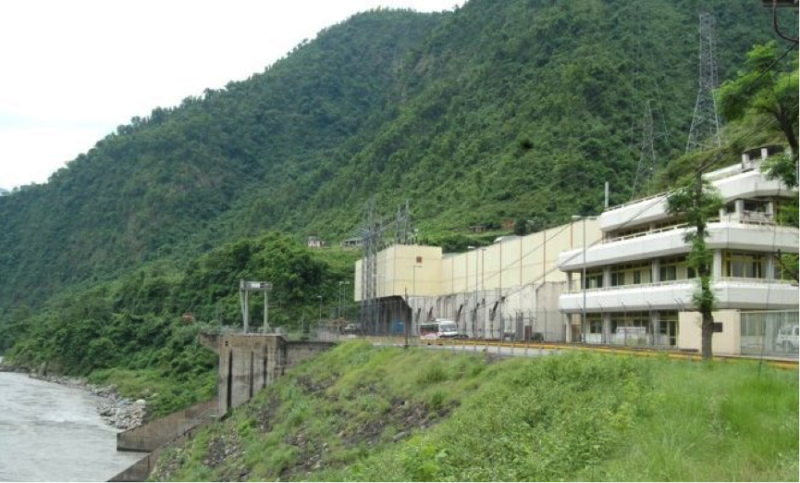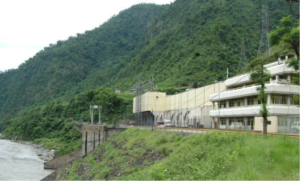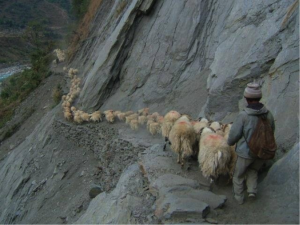Louis Dreyfus-Weidenfeld Scholar Birendra Rana (MSc Water Science, Policy and Management) received a Max Weidenfeld travel grant to conduct research for his thesis in Nepal. In this blog post, he shares the results of this research
Denis Kucinich said, “It is time for a sustainable energy policy which puts consumers, environment, human health and peace first”. With governments aggressively pushing ahead with massive infrastructural development policies, it has almost become the new normal for infrastructure projects to prioritize commercial benefits over socio-environmental equity. My recent experience conducting fieldwork for my dissertation in remote villages in the Lamjung district of Nepal revealed that, the challenges notwithstanding, it is a highly rewarding experience to take a slightly different perspective, which is less deliberated in today’s neo-liberal world. More importantly, this is important in a developing country like Nepal and others where the local rural population is expected to be strategic partner in the development of infrastructure projects such as hydroelectric schemes. This sounds prudent in theory and is much emphasized in the texts, and yet in spite of this it is not practiced. On the contrary, the local population features only at the receiving end of such projects because of the adverse impact on their lives and livelihoods.
For my dissertation, I decided to pick up a topic that may not be directly related to my professional field but one which I am really passionate about. Crucially my chosen topic lays at the intersection of my professional work and the agenda of the UN’s Sustainable Development Goals for 2030. This led me to visit Lamjung district in mid-western Nepal and interact with households whose lives and livelihoods were directly or indirectly affected by hydropower projects in the area. In my dissertation, I am attempting to reframe existing perspectives through a slightly different lens. The first concerned ex-post Cost Benefit Analysis, which is a central variable to my thesis, and the second concerned benefit-sharing mechanisms.
Revisiting ‘cost benefit analysis of Middle Marsyangdi HEP’
Policy makers in Nepal have traditionally shown their predilection for bigger hydropower dams as they asserted that these schemes not only generated electricity – much needed for industrial production – but also promoted socio-economic growth in the local rural area. Their assertion is based on two premises: first, the benefits from such projects undoubtedly outstrip the costs incurred and hence it justifies the investment of public funds. Second, the benefit distribution is transparent and equitable. Middle Marsyangdi Hydroelectric Project (HEP) is a 70 MW capacity project in Lamjung district Nepal, built with the bilateral cooperation of the German government, which came into operation in 2007 after significant cost and time overruns. Located in mid-western Nepal, the HEP’s main works include a 34.5m dam with a crest length of 95m, and a reservoir with storage capacity of 1.65 million m3. Going into this study, I revisited the cost benefit study report and re-ran the IRR and NPV figures. What I found, however, was that revenue from the electricity generation notwithstanding, the project is one of the costliest projects built in Nepal, severely undermining the original BC ratio as well as the economic argument for undertaking such a mammoth project. This project was, however, advertised as a virtuous mission and claimed that it was inextricably linked to the socio-economic development of the local population, most of whom are ethnic minorities.
Reframing ‘Compensation Sharing Mechanisms’
The Electricity Development Act (2001) mandates that hydropower projects allocate a certain fraction of their profits towards the local economic development of the district. The aim is to make these development projects strategic stakeholders in the district’s socio-economic development. In many respects, this is true. However, through examining the Human Development statistics of the Lamjung district and after interacting with discussion groups and households in the villages, I soon began to realize that the hydro-induced development fervour in the district is largely confined to the slogans of state policies. For instance, Lamjung is a district with one of the highest per capita levels of availability of water and has a larger number of hydropower projects than any other district in Nepal. Arguably, one would imagine Lamjung to be at least at par with, if not better than, other leading districts in the country in terms of HDI and economic indicators. On the contrary the opposite is true. For instance, the HDI report from 2014 shows the district bearing a staggering 36.38% adult illiteracy rate and 32.20% malnourished infants. Interestingly, 33% of its population lives without electricity today. People whom I spoke with pointed towards downstream Chitwan district, which has benefitted tremendously from cheap electricity and an improved water navigation system. Crucially, I am certain that the huge scale of deforestation in Lamjung makes it vulnerable to climate change. This finding is commensurate with the work of Duflo & Banerjee (2013), which focused on Indian dams. While this realization does not dramatically impact my dissertation analysis, it contributes to increasing advocacy to improve existing benefit-sharing mechanisms so that districts like Lamjung, which host such infrastructure projects, get adequate compensation for their local development because they have to absorb the externalities of environmental degradation.
I am currently in the process of writing my dissertation in Water Science, Policy and Management. With this dissertation I hope that my work can shed some light on a different perspective and eventually make some small but meaningful contribution to the ongoing hydropower-water management dialogue in Nepal towards making compensation policies more just and sustainable.
Taking this opportunity, I would like to remember the late Lord Weidenfeld, whose remarkable philanthropy has created a unique pathway for individuals and businesses to engage with the global community. Had it not been fir the WHT and Louis Dreyfus Foundation, who have been investing significant resources towards cultivating leaders for tomorrow, it wouldn’t have been possible for me to attend this prestigious university. The program has not only given me a valuable opportunity to pursue graduate studies in my chosen field, but has also allowed me to engage in constructive dialogue about global challenges with leading journalists, academics, business leaders, and my highly intellectual peer group. Crucially, this experience has helped me develop my skills and networks to a level that I am convinced will help me to influence hydropower development policy debates in Nepal, or at the very least our perception of it, in some small way.
About the author:
Birendra Rana is currently finishing an MSc in Water Science, Policy and Management at the University of Oxford as a Louis Dreyfus-Weidenfeld Scholar






